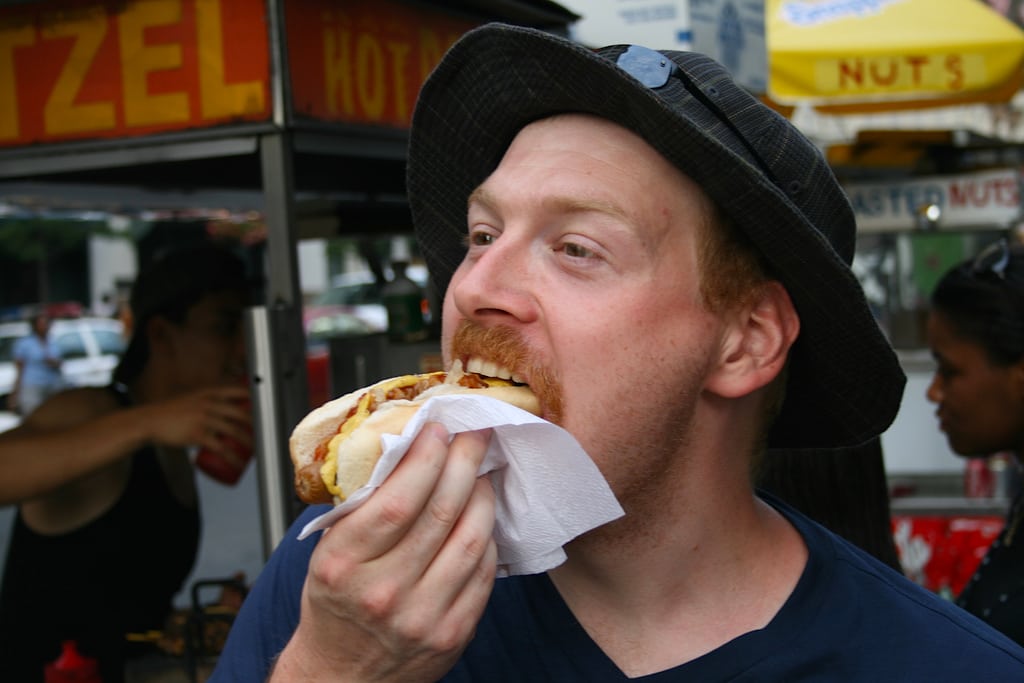Skift Take
Walking food tours meet travelers' growing desires to escape tourist zones for neighborhoods, discover local cuisine, and meet the residents that frequent these stops on a daily basis.
Traveling in the name of food is a common activity today with travelers scouring Yelp reviews, heading into locals’ kitchens, and hopping on tours in search of authentic dishes and experiences.
Food tours are just one of the many activities available to foodie-minded travelers, but the Internet has significantly decreased the barriers to entry suggesting that anyone with at least a handful of favorite restaurants and a free afternoon could start marketing and selling their own tours. However, an easy start doesn’t equal easy success.
Scott Newman, the CEO of online ticketing platform Zerve, traces the start of the walking food tour phenomenon in the U.S. to Wok Wiz in San Francisco and Savory Sojourns in New York, which launched in 1984 and 1996, respectively. Both tours now sell tickets through Zerve.
Today there are at least 500 businesses hosting walking or driving food tours in the 32 cities where Zerve operates. There are, of course, hundreds and perhaps thousands more in the U.S. and abroad.
In 2003, when the company first started selling food tours for Foods of New York Tours, phone representatives had to describe what a food tour was to customers, Newman says.
Fast forward to 2014 and Food Tours of New York sold approximately 34,900 tickets in one year. In that time, hundreds of new food tours have also cropped up around it.
As was discussed in Skift’s recent trends report “The Rise of Culinary Tourism,” the introduction of the Food Network, the emergence of a celebrity chef culture, foodie blogs and social media all increased travel consumers’ awareness of different cuisines and cultures and their desire to experience them.
Growth Factors and Challenges
Tour companies no longer have to be listed in a Lonely Planet or Frommer’s book, print expensive brochures for hotel lobbies, or even befriend hotel concierges to be recognized. Starting in the late 1990s, entrepreneurs could begin marketing themselves directly to consumers through search engines and social media, Newman says.
Foods of New York Tours founder Todd Lefkovic says almost all of its marketing spend, 95 percent, and bookings, 99 percent, are online. The company continues to invest 5 percent of its marketing spend on post cards despite just 1 percent of bookings coming through that means.
Skift has previously written about the factors leading to a growth in tour entrepreneurs and the challenges they still face, including insurance regulations and licensing exams.
Another challenge is scale. Turning a one-man show into an actual business is a challenge that the best food tour entrepreneurs eventually face. Lefkovic says that the best tour guides are really actresses and actors who show up for a performance and then leave.
“There’s few barriers to entry,” says Scott, “but there are big barriers to success.”
Deal Sites
Listing tours on discount websites like LivingSocial or Groupon is another common method for attracting new customers and building brand awareness.
In 2014, LivingSocial offered nearly 130 deals for food tours from 60 merchants. The food tours’ focus varied from chocolate and cupcakes to BBQ and pizza in cities across the U.S., according to a company spokesperson.
The food tour deals sell at a quicker pace, on average, than other LivingSocial deals. For example, approximately 30 percent of all available vouchers are sold on the third day that a deal is live. Discounts can be as much as 50 percent off the original cost.
Groupon also offers deals for food tours, which are primarily sourced through acquired startup SideTour. Although the site was unable to provide statistics, a spokesperson says that foraging experiences tend to do particularly well.
Newman has previously referred to the deals sites as “crack” that tour entrepreneurs often can’t get off while making slim to no profits.
The Daily Newsletter
Our daily coverage of the global travel industry. Written by editors and analysts from across Skift’s brands.
Have a confidential tip for Skift? Get in touch
Tags: food and drink, nyc, tours
Photo credit: A tourist eats a hot dog in New York City. Jan-Erik Finnberg / Flickr
